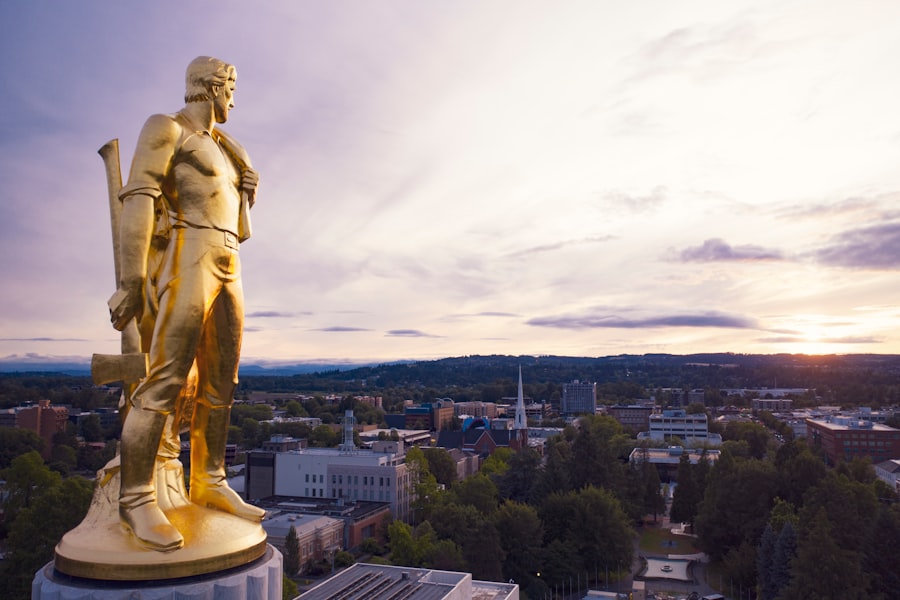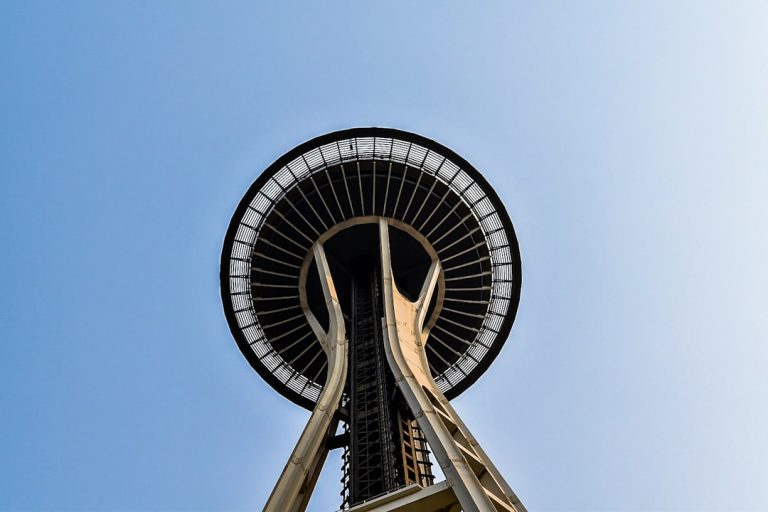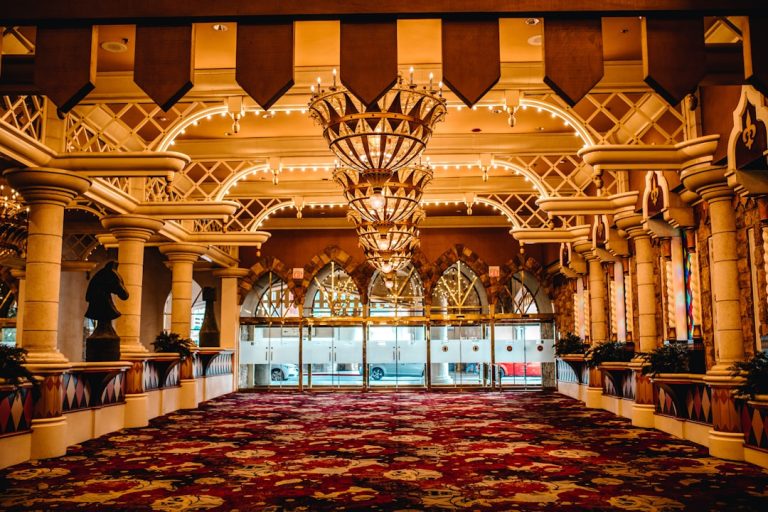
Tulsa, Oklahoma, is a city steeped in a rich tapestry of history that reflects the diverse cultures and events that have shaped its identity. Originally inhabited by Native American tribes, including the Creek and Osage, the area became a significant cultural and economic hub in the late 19th century. The discovery of oil in the early 1900s transformed Tulsa into a booming metropolis, earning it the nickname “Oil Capital of the World.” This rapid growth attracted a wave of entrepreneurs and immigrants, leading to a vibrant community that thrived on innovation and industry.
The impact of the oil boom is still evident today, with many historic buildings and museums that tell the story of this transformative era. The city’s history is also marked by significant events that have left an indelible mark on its landscape. One of the most notable is the Tulsa Race Massacre of 1921, a tragic event that resulted in the destruction of the prosperous Greenwood District, known as “Black Wall Street.” This affluent African American community was decimated by violence, leading to a long-lasting impact on the city’s social fabric.
In recent years, efforts have been made to acknowledge this dark chapter in Tulsa’s history through memorials and educational initiatives, fostering a dialogue about racial equity and justice. The Greenwood Cultural Center and the John Hope Franklin Reconciliation Park serve as poignant reminders of this past while promoting healing and understanding.
Key Takeaways
- Tulsa has a rich history as a hub for the oil industry and as a center for Native American culture and art.
- Must-see places and landmarks in Tulsa include the Philbrook Museum of Art, the Golden Driller statue, and the historic Route 66.
- Unique attractions and entertainment options in Tulsa include the Gathering Place, the Woody Guthrie Center, and the Tulsa Zoo.
- Outdoor adventures and natural beauty can be found at the Turkey Mountain Urban Wilderness, the Tulsa Botanic Garden, and the Arkansas River.
- Local cuisine and dining hotspots in Tulsa offer a diverse range of options, from classic barbecue joints to trendy farm-to-table restaurants.
- Hidden gems and off-the-beaten-path discoveries in Tulsa include the Center of the Universe, the Cave House, and the Admiral Twin Drive-In.
Must-See Places and Landmarks
Tulsa boasts an array of must-see places and landmarks that reflect its unique character and historical significance. One of the most iconic structures is the Philbrook Museum of Art, housed in a stunning Italian Renaissance-style villa that was once the home of oil magnate Waite Phillips. The museum features an impressive collection of art ranging from Renaissance to contemporary pieces, alongside beautifully landscaped gardens that invite visitors to explore.
The museum not only showcases art but also serves as a cultural hub for the community, hosting various events, workshops, and exhibitions throughout the year. Another landmark that captures the essence of Tulsa is the Art Deco-style Boston Avenue Methodist Church. This architectural gem is recognized as one of the finest examples of Art Deco architecture in the United States.
Its striking façade and intricate stained glass windows make it a popular destination for both architecture enthusiasts and casual visitors alike. The church’s interior is equally breathtaking, featuring soaring ceilings and beautiful murals that depict biblical scenes. Guided tours are available, allowing guests to appreciate the artistry and craftsmanship that went into its design.
Unique Attractions and Entertainment

Tulsa offers a plethora of unique attractions that cater to diverse interests, making it an exciting destination for visitors. One such attraction is the Gathering Place, an expansive riverfront park that has redefined public spaces in the city. Opened in 2018, this award-winning park features playgrounds, gardens, walking trails, and even a lake for kayaking.
It serves as a gathering spot for families and friends, hosting concerts, festivals, and community events throughout the year. The park’s innovative design encourages outdoor activity and fosters a sense of community among residents and visitors alike. For those interested in live entertainment, the Brady Theater is a historic venue that has hosted countless performances since its opening in 1914.
Originally built as a vaudeville theater, it has evolved into a popular concert hall featuring a wide range of artists from various genres. The theater’s rich history is palpable as you walk through its ornate lobby adorned with vintage decor. Attending a show here not only provides an opportunity to enjoy live music but also immerses you in Tulsa’s vibrant cultural scene.
Outdoor Adventures and Natural Beauty
| Destination | Activities | Scenic Views | Trails |
|---|---|---|---|
| Yellowstone National Park | Hiking, Wildlife Viewing, Camping | Geysers, Waterfalls, Canyons | Over 900 miles |
| Grand Canyon National Park | Hiking, Rafting, Helicopter Tours | Canyon Vistas, Colorado River | 15 official trails |
| Banff National Park | Hiking, Skiing, Canoeing | Lakes, Mountains, Glaciers | Over 1,000 miles |
Tulsa’s natural beauty is complemented by numerous outdoor adventures that beckon nature enthusiasts to explore its landscapes. The city is home to several parks and recreational areas that offer opportunities for hiking, biking, and picnicking. One standout location is Turkey Mountain Urban Wilderness Area, which spans over 300 acres of rugged terrain just minutes from downtown Tulsa.
With miles of trails winding through wooded areas and along scenic vistas, it’s an ideal spot for outdoor activities such as mountain biking and trail running. The area also provides stunning views of the Arkansas River, making it a favorite among photographers and nature lovers. In addition to Turkey Mountain, the Tulsa River Parks system offers an extensive network of trails along the Arkansas River.
These trails are perfect for walking, jogging, or cycling while enjoying picturesque views of the river and surrounding greenery. The parks are equipped with amenities such as picnic areas, playgrounds, and sports facilities, making them ideal for family outings or leisurely afternoons. Seasonal events like outdoor movie nights and farmers’ markets further enhance the experience, creating a vibrant atmosphere for both locals and visitors.
Local Cuisine and Dining Hotspots
Tulsa’s culinary scene is as diverse as its history, offering a wide range of dining options that reflect both traditional Southern fare and contemporary cuisine. One must-visit hotspot is Burn Co Barbeque, renowned for its mouthwatering smoked meats and laid-back atmosphere. The restaurant has garnered a loyal following for its brisket, ribs, and pulled pork, all cooked to perfection using time-honored techniques.
The casual setting invites diners to enjoy their meals at communal tables while savoring the rich flavors that define Oklahoma barbecue. For those seeking a taste of local flavors with a modern twist, The Vault is an excellent choice. Housed in a former bank building, this upscale eatery features a menu that highlights seasonal ingredients sourced from local farms.
Diners can indulge in dishes like pan-seared scallops or house-made pasta while enjoying an extensive wine list curated to complement each meal. The restaurant’s unique ambiance combines historic charm with contemporary design elements, creating an inviting space for both intimate dinners and celebratory gatherings.
Hidden Gems and Off-the-Beaten-Path Discoveries

Beyond its well-known attractions, Tulsa is home to hidden gems waiting to be discovered by adventurous travelers. One such gem is the Woody Guthrie Center, dedicated to preserving the legacy of the iconic folk musician who hailed from Oklahoma. This intimate museum features exhibits showcasing Guthrie’s life, music, and activism while providing insight into his influence on American culture.
Visitors can explore interactive displays and listen to recordings of his songs, gaining a deeper appreciation for his contributions to music and social justice. Another off-the-beaten-path discovery is the Tulsa Historical Society & Museum, which offers a comprehensive look at the city’s past through engaging exhibits and artifacts. Located in a charming historic home, the museum provides insights into Tulsa’s development from its early days to modern times.
Visitors can explore exhibits on various topics such as local industries, notable figures, and cultural movements that have shaped the city’s identity.
In conclusion, Tulsa’s rich history, diverse attractions, outdoor adventures, culinary delights, and hidden gems create a multifaceted destination that appeals to a wide range of interests.
Whether you’re exploring its historical landmarks or indulging in local cuisine, Tulsa offers an experience that is both unique and memorable.
If you’re intrigued by the diverse attractions and historical insights of Tulsa, Oklahoma, you might find the article “Tulsa: Facts and Places to Visit” particularly enriching. It offers a comprehensive overview of what makes Tulsa a unique destination, from its rich cultural heritage to its modern attractions. For more detailed information, you can read the full article by following this link: club/2023/05/13/tulsa-facts-and-places-to-visit/’>Tulsa: Facts and Places to Visit.
This resource is perfect for anyone planning a visit or simply looking to learn more about this vibrant city.
FAQs
What are some interesting facts about Tulsa, Oklahoma?
– Tulsa is known as the “Oil Capital of the World” due to its history as a major hub for the oil industry.
– The city is home to the largest collection of art deco architecture in the United States, with many buildings dating back to the 1920s and 1930s.
– Tulsa is the birthplace of Route 66, one of the most famous highways in the United States.
– The city has a rich musical heritage and is known for its contributions to the development of western swing and rockabilly music.
What are some popular places to visit in Tulsa, Oklahoma?
– The Philbrook Museum of Art, housed in a beautiful Italian Renaissance villa, is a popular destination for art lovers.
– The Gathering Place, a sprawling park along the Arkansas River, offers a wide range of outdoor activities and attractions for visitors of all ages.
– The Tulsa Zoo, home to over 400 animal species, is a great place for families to explore and learn about wildlife.
– The Woody Guthrie Center, dedicated to the life and legacy of the folk musician and activist, offers a fascinating look into American history and culture.
What are some things to see and do in Tulsa, Oklahoma?
– Take a stroll through the historic Cherry Street district, known for its charming shops, restaurants, and vibrant nightlife.
– Visit the Tulsa Air and Space Museum to learn about the city’s aviation history and see a variety of aircraft and space artifacts.
– Explore the Blue Dome District, a trendy area with art galleries, live music venues, and a variety of dining options.
– Attend a performance at the Tulsa Performing Arts Center, which hosts a wide range of theatrical and musical productions throughout the year.






